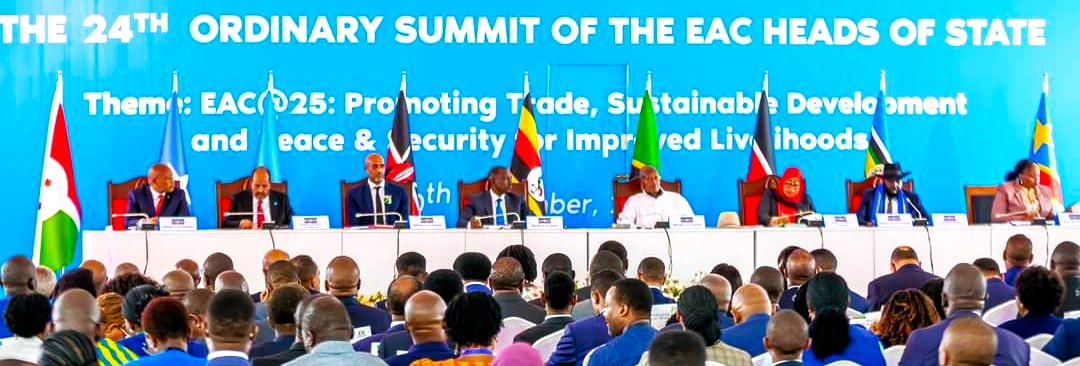French has just been endorsed to become official language of East African Community.
French has joined Kiswahili and English, in being recognized as official languages of the eight-member states East African Community, a regional bloc with a population of over 300 million residents.
During the Heads of State Summit meeting held in the Northern Tanzanian City of Arusha, Presidents of the eight member states forming the East African Community approved the inclusion of two languages as official media of communication.
Previously English was the only official language of the 25-year-old East African Community, with Kiswahili regarded as lingua-franca of the EAC.
But with the community being made up of both Anglophone and Francophone African states, it was only a matter of time before French was added in the EAC dictionary.
Kiswahili, on the other hand, is the local language, which is more familiar among all Tanzanians, majority of Kenyans, some Ugandans, the residents of Eastern parts of DR Congo as well some Rwandans and Burundians.
However Kiswahili continues to grow, transcending the East African borders and even being taught in some higher institutes of learning overseas especially China and Japan.
Meanwhile also, the East African Community Heads of State have agreed to hasten the establishment of the Political Federation, the fourth and ultimate stage in the EAC integration.

They noted that the formation of a Federation had been agreed way back in 1963 by the EAC’s Founding Fathers – President Jomo Kenyatta (Kenya), Dr Apollo Milton Obote (Uganda) and Mwalimu Julius Kambarage Nyerere (Tanganyika, now Tanzania).
It was noted that Tanganyika and Zanzibar went ahead to form the United Republic of Tanzania, adding that the federation should be extended to transform the region into one as envisaged by the three Founding Fathers.
The EAC leaders further agreed on the need to fully operationalise the Customs Union and Common Market protocols to enhance intra-regional trade which is still relatively low.
In his remarks, Ugandan President Yoweri Museveni said that EAC should be celebrating more than 1,000 years of trade interconnectedness within the region instead of focusing on the achievements of the past 25 years only.
President Museveni said that East Africa’s Coastal, Great Lakes and Lake Victoria Basin regions were a Connected Trade Area (CTA) interlinked by trade routes along the current Central and Northern Transport Corridors extending all the way to Mesopotamia in present day Iraq. The partition of Africa into spheres of influence in 1884 by the European colonial powers disconnected the CTA by segmenting it into separate countries.
President Museveni said that the formation of the East African Federation would have forestalled Idi Amin’s ascendancy to power in Uganda, solved in good time the problems Burundi and Rwanda, and mitigated the internal conflicts in the Federal Republic of Somalia and South Sudan that caused much suffering to the people of the two countries.
On his part, Kenyan President William Samoei Ruto said that a survey taken way back in 2010 indicated that East Africans were fully behind the integration process and supported the establishment of a political federation.
President Ruto hailed the Republics of Burundi, Uganda and Kenya, which have already undertaken national consultations on the drafting of the constitution for the EAC Political Confederation, and thanked Rwanda, South Sudan and Tanzania for having set dates for national consultations on the process.
President Ruto said that EAC was the foremost regional economic community in Africa with intra-regional trade standing at 28 percent which is the highest in Africa.
President Ruto said that towards that end, Kenya had provided a forum for South Sudan’s political actors to talk to one another in order to stabilise the country. Kenya was also working with Somalia and Uganda to reduce tension and stabilise the Horn of Africa region.
President Ruto said that Kenya was in agreement with the Democratic Republic of the Congo’s desire to merge the Luanda and Nairobi peace process under the Luanda process, adding that Kenya had no reservations with the Nairobi Process mediator, retired President Uhuru Kenyatta, being enjoined to the Luanda process.
President Samia Suluhu Hassan of Tanzania pointed out that in the past there have been naysayers who predicted the downfall of the East African Community but against all odds the EAC was going strong.
On his part, Somalia’s President Hassan Sheikh Mohamud said that his country’s entry into the EAC was the culmination of a long desire to join her neighbours in East Africa as part of a robust economic and political entity.
President Mohamud said that Somalia has a vast population of business-oriented people who are risk takers with a keen desire for investment in various sectors.
Also present at the event were Burundian Vice President Prosper Bazombanza, EAC Secretary General Hon. Veronica Nduva, Ministers, Members of the Diplomatic Community, Development Partners, among other delegates.

